Nathaniel Conklin House
Introduction
Text-to-speech Audio
Images
Front (east facade) of Nathaniel Conklin House, a boarding house, in 1936 photo (HABS NY, 52-BAB)
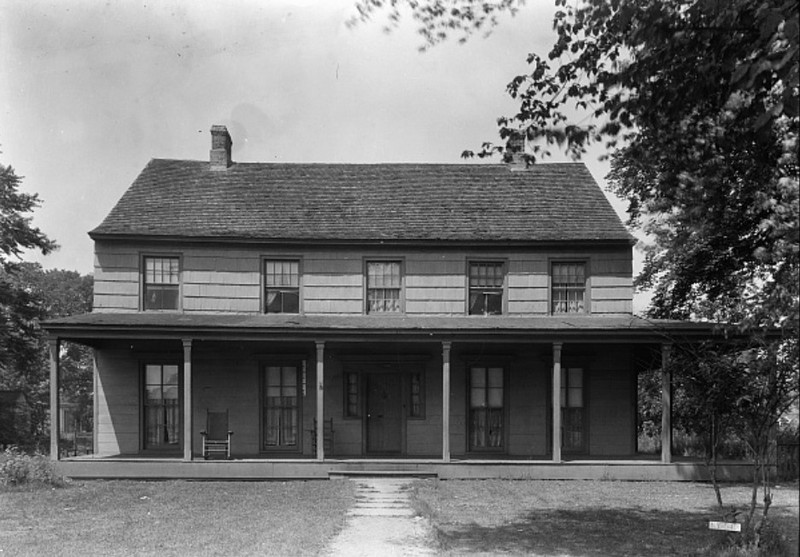
Plan drawing of first floor of Nathaniel Conklin House in 1936 for HABS (Besancon and Wutamak)
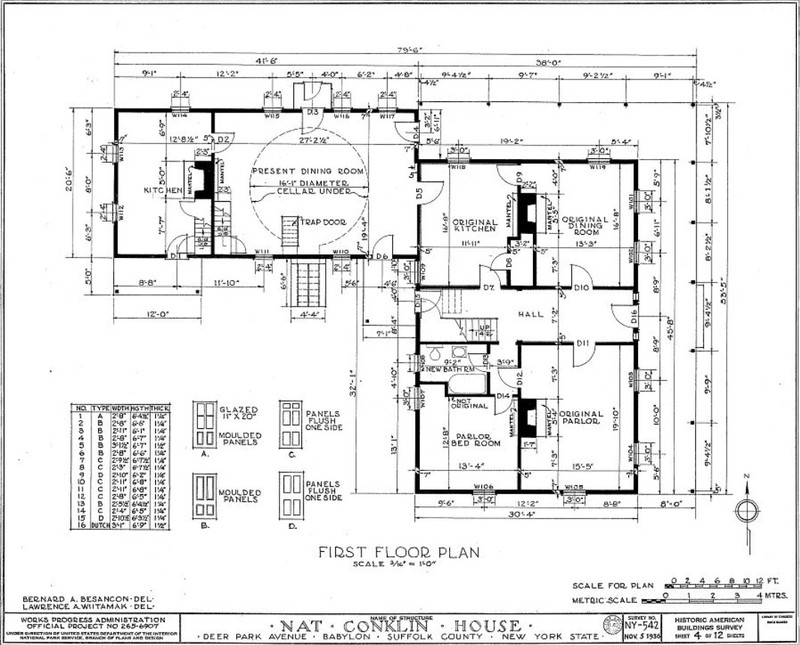
Rear of house in 1936 photo; sign reads "Boarding, Room and Board" (HABS NY, 52-BAB)
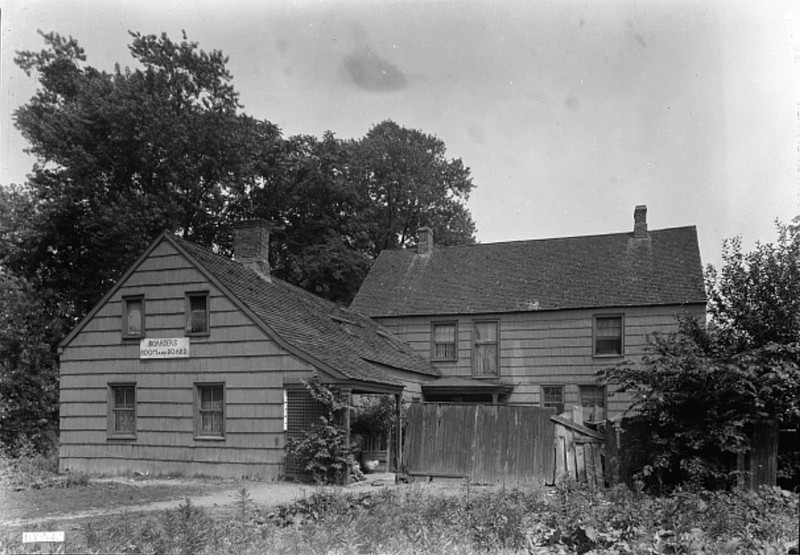
Inscribed tablet salvaged from house re: 1803, Nat. Conklin, in 1936 HABS photo (HABS NY, 52-BAB)
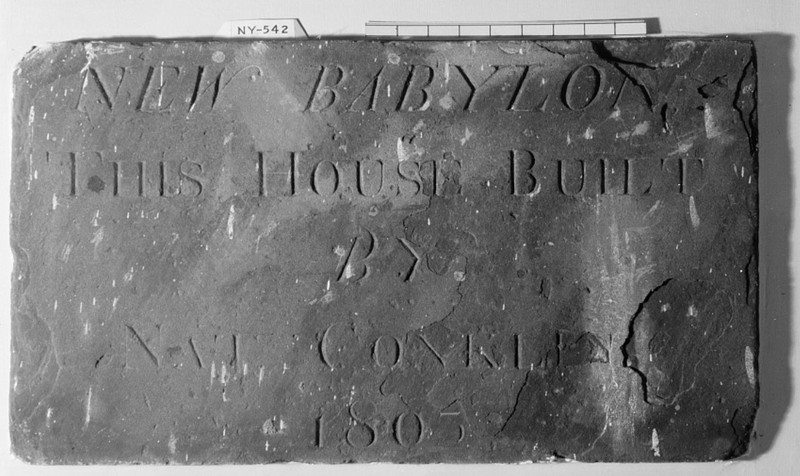
1936 HABS drawings of N & S elevations of Conklin House (Besancon and Wutamak)
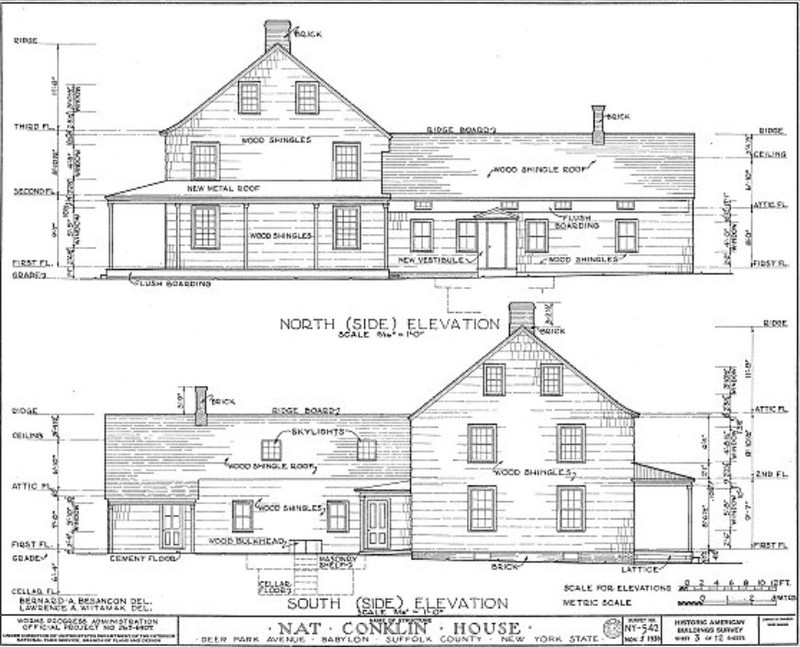
Conklin House (red circle), owned by Mrs. T.P. Carll, on 1858 inset map of Babylon (Robert P. Smith)
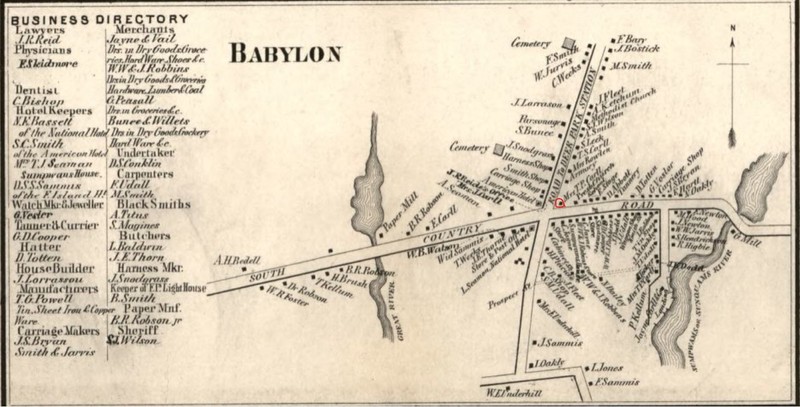
Backstory and Context
Text-to-speech Audio
Nathaniel Conklin's grandfather, Captain Jacob Conklin, built the first house in what became Babylon in 1710. The elder Conklin is said to have sailed with the pirate Captain Kidd. Nathaniel's father, Colonel Platt Conklin, served the colonies in the Revolutionary War. Platt married Phebe Smith and Nathaniel was their only child. Legend has it that Phebe was concerned that her son was building his new home next to a tavern, and proclaimed the area a "Babylon." Nathaniel christened his new home "New Babylon" and inscribed a marble tablet that was placed in the original chimney and read "New Babylon, This House Built by Nat. Conklin 1803." The two-story wood frame house with a large attic originally stood on East Main Street facing south, at the northeast of the intersection with Deer Park Avenue. Nathaniel Conklin's tannery was located on East Main Street in what was known then as South Huntington (the town's name changed in 1830 when the Post Office was renamed Babylon).
The house later became a home for T. Platt Carll, who operated a store in the building's west end. David S. Sammis purchased the house from Carll's widow in 1871. The Babylon area became a stopping over point for farmers from the North Shore of Long Island who would travel to the South Shore to gather salt hay. The hay was useful for livestock bedding, stuffing mattresses, and insulating buildings. Later, the area became dotted with hotels to accommodate workers who were building the nearby railroad tracks or highways, and the resulting visitors to Fire Island beaches. When John Lux, the hotelman, had the house moved to its present location in 1873, the building was placed eight feet from an existing building and became the "Washington Boarding House." An eight or nine-foot connection was built to connect the house and the rear ell, perhaps to create a larger space for a dining room.
The Conklin House was documented by the Historic American Buildings Survey (HABS) in 1936; it was still the Washington Boarding House. The Davis S. Sammis estate owned the house in 1936. The upstairs contained ten bedrooms at the time! The Conklin House now offers tours for schoolchildren on field trips and guided historical tours. The Village of Babylon makes the house available for local cultural, educational or historical events. Different parts of the house represent the eras that the house was in use. The main door is said to be original (1803). The Federal Room is furnished like the parlor of the 1803 Nathaniel Conklin home may have looked; its fireplace is a reconstruction because the original chimneys did not move when the house was moved here. The Victorian Room reflects the tastes of John Lux, the 1870s hotelman. The grounds contain a Victorian style flower garden and a kitchen garden with herbs and fruit trees. The barn was built in 2002 to the specifications of an authentic working barn from Bethpage using mortise and tenon construction. The barn displays items that were used historically for farming, fishing and hunting.
Sources
Mahnken, Frederick. Pope, Lester B. Descriptive Data, Nat Conklin House, Babylon, L.I., N.Y., Suffolk Co., HABS No. NY-542, 52-BAB. Historic American Buildings Survey. Washington, DC. National Park Service, 1936.
Town of Babylon. A New Babylon, Town History. Accessed May 12th 2021. https://www.townofbabylon.com/286/A-New-Babylon.
Village of Babylon, N.Y.. Conklin House History, Nathaniel Conklin House. Accessed May 12th 2021. https://www.villageofbabylonny.gov/conklin-house/history.
Village of Babylon, N.Y.. The Gardens, Nathaniel Conklin House. Accessed May 12th 2021. https://www.villageofbabylonny.gov/conklin-house/the-gardens.
Village of Babylon, N.Y.. The Barn, Nathaniel Conklin House. Accessed May 12th 2021. https://www.villageofbabylonny.gov/conklin-house/the-barn.
Village of Babylon, N.Y.. The Federal Room, Nathaniel Conklin House. Accessed May 18th 2021. https://www.villageofbabylonny.gov/conklin-house/the-federal-room.
Village of Babylon, N.Y.. The Victorian Room, Nathaniel Conklin House. Accessed May 18th 2021. https://www.villageofbabylonny.gov/conklin-house/the-victorian-room.
https://www.loc.gov/pictures/item/ny0763.photos.123230p/
Library of Congress: https://www.loc.gov/pictures/item/ny0763.sheet.00004a/
https://www.loc.gov/pictures/item/ny0763.photos.123232p/
https://www.loc.gov/pictures/item/ny0763.photos.123237p/
https://www.loc.gov/pictures/item/ny0763.sheet.00003a/
https://www.loc.gov/item/2013593235/
